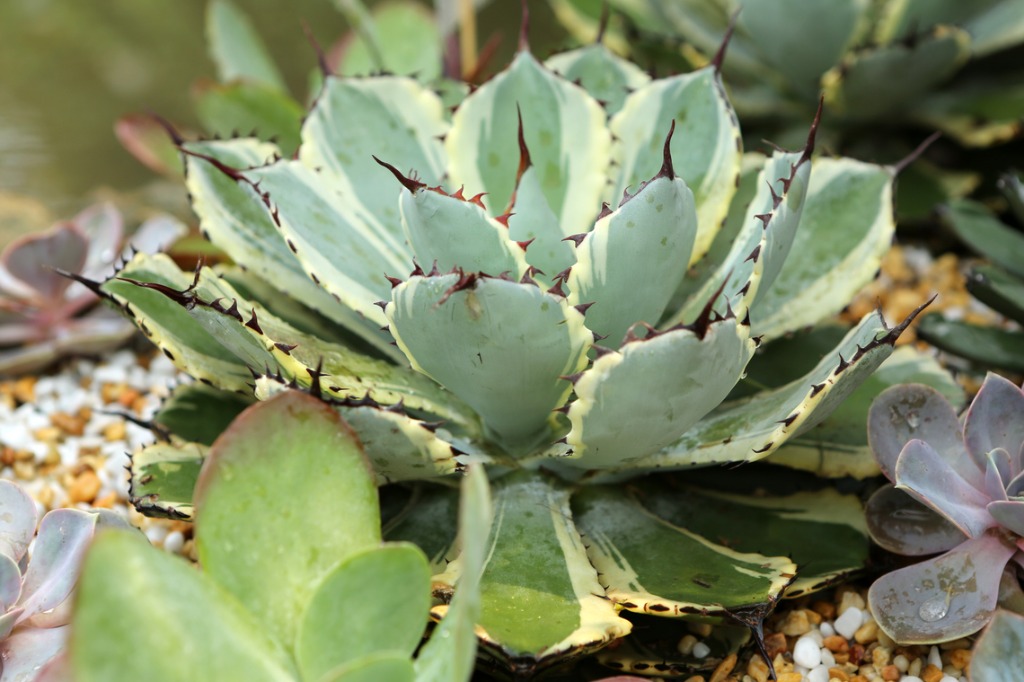Butterfly Agave
(Agave potatorum)

Description
Agave potatorum, the Verschaffelt agave, is a species of flowering plant in the family Asparagaceae. A smallish and attractive succulent perennial, it is native to partial desert areas of Mexico from Puebla south to Oaxaca. The Latin specific epithet potatorum refers to drinking and brewing. In its range, it is used extensively to make mezcal, and for this reason, it is considered to be a threatened species. This plant has gained the Royal Horticultural Society’s Award of Garden Merit. Agave potatorum grows as a basal rosette of between 30 and 80 flat spatulate leaves of up to 1 foot in length and edge fringe of short, sharp, dark spines and ending in a needle of up to 1.6 inches long. The leaves are pale, silvery white, with the flesh coloured green fading lilac to pink at the tips. The flower spike can be 10–20 feet long when fully developed and bears pale green and yellow flowers. Agave is a genus of monocots native to the hot and arid regions of the Americas, although some Agave species are also native to tropical areas of South America. The genus Agave (from the Ancient Greek αγαυή, agauê) is primarily known for its succulent and xerophytic species that typically form large rosettes of strong, fleshy leaves. Agave now includes species formerly placed in a number of other genera, such as Manfreda, ×Mangave, Polianthes and Prochnyanthes. Many plants in this genus may be considered perennial, because they require several to many years to mature and flower. However, most Agave species are more accurately described as monocarpic rosettes or multiannuals, since each individual rosette flowers only once and then dies; a small number of Agave species are polycarpic. Maguey flowers are considered edible in many indigenous culinary traditions of Mesoamerica. Along with plants from the closely related genera Yucca, Hesperoyucca, and Hesperaloe, various Agave species are popular ornamental plants in hot, dry climates, as they require very little supplemental water to survive. Most Agave species grow very slowly. Some Agave species are known by the common name "century plant". The succulent leaves of most Agave species have sharp marginal teeth, an extremely sharp terminal spine, and are very fibrous inside. The stout stem is usually extremely short, which may make the plant appear as though it is stemless.
Taxonomic tree:







